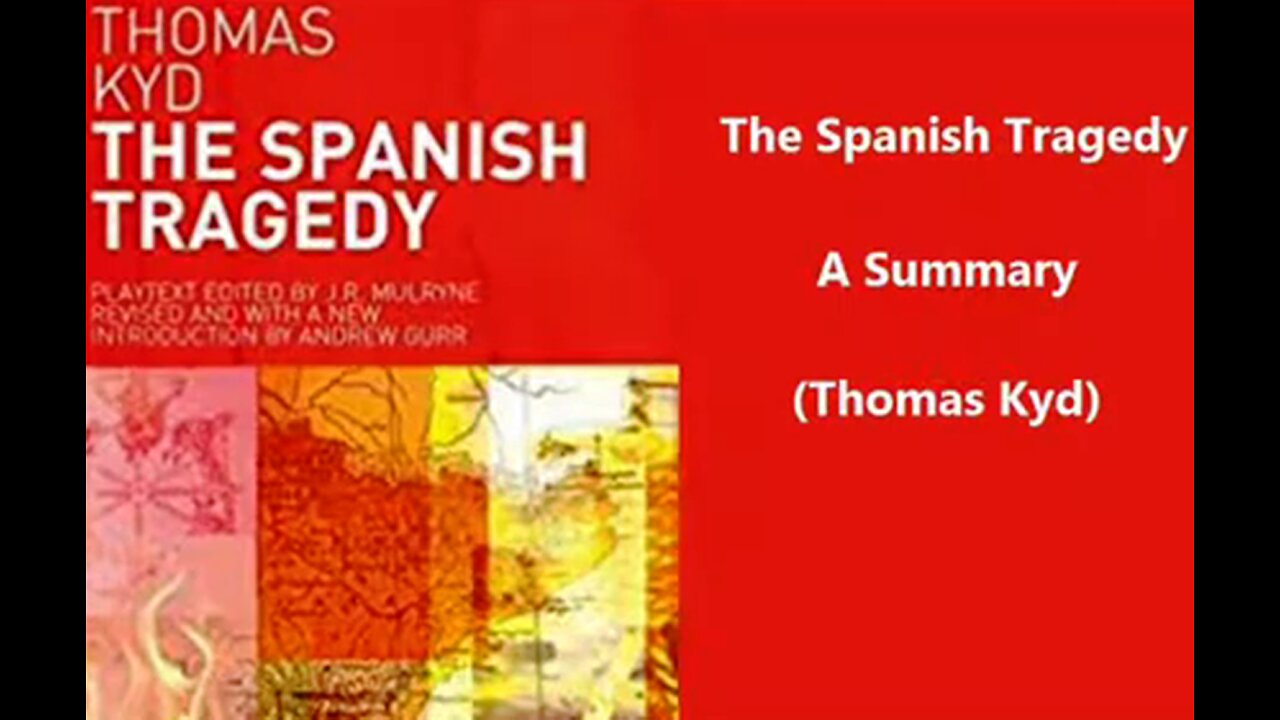Premium Only Content

Summary: The Spanish Tragedy (Thomas Kyd)
"The Spanish Tragedy," also known as "Hieronymo's Mad Againe" and "Hieronimo," is a revenge tragedy play written by English playwright Thomas Kyd. It is one of the most influential works in the Elizabethan drama and was first performed around 1587.
The play revolves around the character Hieronimo, a Spanish nobleman and the Marshal of Spain, who seeks revenge for the murder of his son Horatio. Hieronimo's quest for vengeance is central to the plot, and he employs various dramatic devices, including a play-within-a-play, to expose the guilt of those responsible for his son's death.
"The Spanish Tragedy" is noted for its themes of revenge, justice, and the consequences of violence. It had a significant impact on later Elizabethan and Jacobean drama, particularly on the development of the revenge tragedy genre, which was characterized by themes of vengeance and moral ambiguity.
One of the most famous aspects of the play is the use of a play-within-a-play, which is a dramatic technique later employed by William Shakespeare in "Hamlet." This play-within-a-play is used to reveal the truth about the murder and to manipulate the emotions and consciences of the characters involved.
"The Spanish Tragedy" is an essential work in the history of English drama, and its influence can be seen in the works of many playwrights of the time. It remains a significant example of the Elizabethan theater's fascination with themes of revenge and justice.
-
 LIVE
LIVE
The Jimmy Dore Show
1 hour agoBig Agriculture Aggressively Coming After RFK jr.! Trump Sentencing in NY Case Delayed!
17,566 watching -
 LIVE
LIVE
RaikenNight
4 hours agoIts Friday!!! Time to play some Dragon Quest 3 Pt 4
228 watching -
 LIVE
LIVE
Adamsgotgame
5 hours agoAim training 357hrs #GZW and more
481 watching -
 LIVE
LIVE
Meisters of Madness
1 hour agoDark Souls 3 - A Campaign Signed in Blood
96 watching -
 57:57
57:57
Candace Show Podcast
4 hours agoJamaica Finally Sent Us Kamala’s Father’s Birth Certificate | Candace Ep 109
25.3K44 -
 24:50
24:50
Misha Petrov
54 minutes agoReacting to YOUR Experiences With Leftist MELTDOWNS Over Trump’s Victory
5 -
 15:33
15:33
Silver Dragons
1 hour agoBullion Dealer Reveals How to Avoid "INFLATION TAX" With Silver and Gold
74 -
 20:53
20:53
SLS - Street League Skateboarding
3 days agoGold Medals, World Class Food, Night life & more - Get Lost: Tokyo
95.2K9 -
 LIVE
LIVE
Yefune Kenizi's [PC] Gaming
4 hours ago $0.62 earnedGTAO - Heists Week: Friday w/ GamingChad
166 watching -
 1:23:02
1:23:02
Baked Linguini's Home Channel
3 hours agoToads Wearing Sunglasses - Let's Play Battletoads in Battlemaniacs
9.44K2